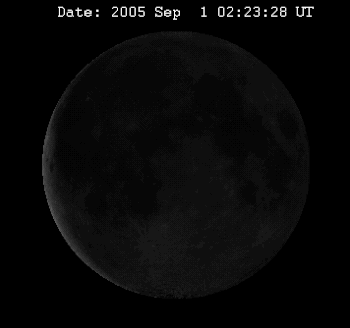Newton's theorem of revolving orbits
In classical mechanics, Newton's theorem of revolving orbits identifies the type of central force needed to multiply the angular speed of a particle by a factor k without affecting its radial motion (Figures 1 and 2).
Newton applied his theorem to understanding the overall rotation of orbits (apsidal precession, Figure 3) that is observed for the Moon and planets.
Isaac Newton derived this theorem in Propositions 43–45 of Book I of his Philosophiæ Naturalis Principia Mathematica, first published in 1687.
This theorem remained largely unknown and undeveloped for over three centuries, as noted by astrophysicist Subrahmanyan Chandrasekhar in his 1995 commentary on Newton's Principia.
Any orbit can be described with a sufficient number of judiciously chosen epicycles, since this approach corresponds to a modern Fourier transform.
[6] Roughly 350 years later, Claudius Ptolemaeus published his Almagest, in which he developed this system to match the best astronomical observations of his era.
To explain the epicycles, Ptolemy adopted the geocentric cosmology of Aristotle, according to which planets were confined to concentric rotating spheres.
The modern understanding of planetary motion arose from the combined efforts of astronomer Tycho Brahe and physicist Johannes Kepler in the 16th century.
Arguing from his laws of motion, Newton showed that the orbit of any particle acted upon by one such force is always a conic section, specifically an ellipse if it does not go to infinity.
According to this theorem, the addition of a particular type of central force—the inverse-cube force—can produce a rotating orbit; the angular speed is multiplied by a factor k, whereas the radial motion is left unchanged.
Newton applied this approximation to test models of the force causing the apsidal precession of the Moon's orbit.
Newton's theorem simplifies orbital problems in classical mechanics by eliminating inverse-cube forces from consideration.
If k2 is greater than one, F2 − F1 is a negative number; thus, the added inverse-cube force is attractive, as observed in the green planet of Figures 1–4 and 9.
The path of the particle ignores the time dependencies of the radial and angular motions, such as r(t) and θ1(t); rather, it relates the radius and angle variables to one another.
For this purpose, the angle variable is unrestricted and can increase indefinitely as the particle revolves around the central point multiple times.
If such an inverse-cube force is introduced, Newton's theorem says that the corresponding solutions have a shape called Cotes's spirals[clarification needed].
On the other hand, when k is greater than one, the range of allowed angles increases, corresponding to an attractive force (green, cyan and blue curves on left in Figure 7); the orbit of the particle can even wrap around the center several times.
Thus, Poinsot spiral motion only occurs for repulsive inverse-cube central forces, and applies in the case that L is not too large for the given μ.
Such curves result when the strength μ of the repulsive force exactly balances the angular momentum-mass term Two types of central forces—those that increase linearly with distance, F = Cr, such as Hooke's law, and inverse-square forces, F = C/r2, such as Newton's law of universal gravitation and Coulomb's law—have a very unusual property.
In other words, the path of a bound particle is always closed and its motion repeats indefinitely, no matter what its initial position or velocity.
As shown by Bertrand's theorem, this property is not true for other types of forces; in general, a particle will not return to its starting point with the same velocity.
This method for producing closed orbits does not violate Bertrand's theorem, because the added inverse-cubic force depends on the initial velocity of the particle.
[2] In Proposition 45 of his Principia, Newton applies his theorem of revolving orbits to develop a method for finding the force laws that govern the motions of planets.
Therefore, the observed slow rotation of the apsides of planetary orbits suggest that the force of gravity is an inverse-square law.
If an elliptical orbit is stationary, the particle rotates about the center of force by 180° as it moves from one end of the long axis to the other (the two apses).
[38] The currently accepted explanation for this precession involves the theory of general relativity, which (to first approximation) adds an inverse-quartic force, i.e., one that varies as the inverse fourth power of distance.
The second term, so Newton reasoned, might represent the average perturbing force of the Sun's gravity of the Earth-Moon system.
For every revolution, the long axis would rotate 1.5°, roughly half of the observed 3.0°[34] Isaac Newton first published his theorem in 1687, as Propositions 43–45 of Book I of his Philosophiæ Naturalis Principia Mathematica.
However, as astrophysicist Subrahmanyan Chandrasekhar noted in his 1995 commentary on Newton's Principia, the theorem remained largely unknown and undeveloped for over three centuries.
To find the magnitude of F2(r) from the original central force F1(r), Newton calculated their difference F2(r) − F1(r) using geometry and the definition of centripetal acceleration.








